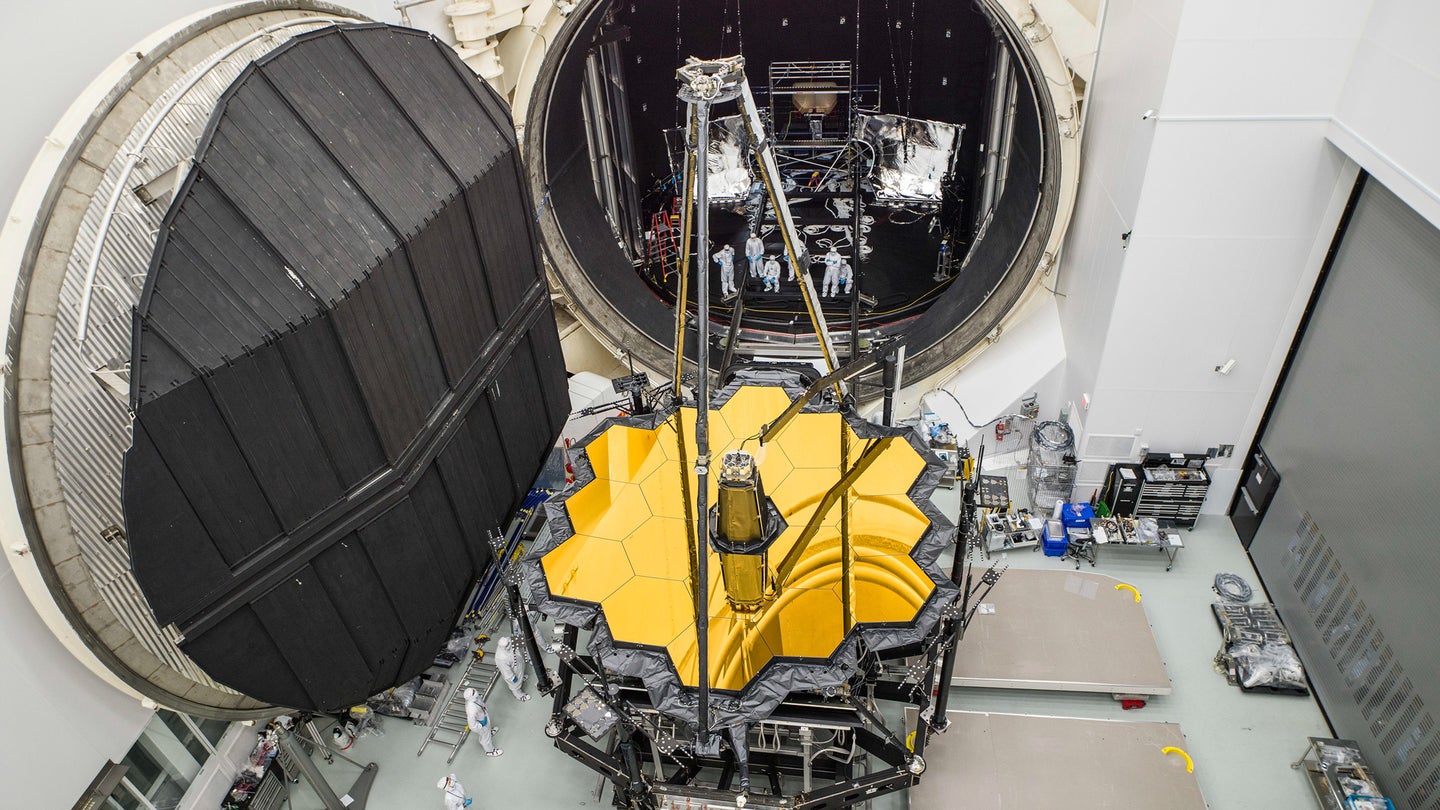
Sometimes, amazing science happens in the background with little to no public attention. All those years of hard efforts and incremental progress are left unseen except by those living and working through it. Now, a new book detailing the making of the James Webb Space Telescope (JWST) aims to change that by sharing photographs, diagrams, and behind-the-scenes information of the science and pioneers behind the project.
Inside the Star Factory: The Creation of the James Webb Space Telescope, NASA’s Largest and Most Powerful Space Observatory gives us a full-body summary of an astronomical feat that required more than 100 million hours of labor over the course of 30 years. It covers everything from the initial conception of the idea to the Christmas Day launch in 2021, providing a robust picture of what went into designing, engineering, and testing such a masterpiece. Science writer Christopher Wanjek provides an in-depth overview of the history of JWST, but even more, the book serves as an “illustrated guide [that] shows readers the heady world of scientific discovery at the very limits of human knowledge.”
All of the 100-plus images of the telescope’s construction were taken by Chris Gunn, who joined the project 15 years ago and was the only photographer given such extensive access to the development and launch of JWST. Over his long career, he’s focused on creating intricate images and videos related to science and technology, with previous experience capturing the last servicing mission to the Hubble Space Telescope. His work puts faces to NASA’s biggest telescope endeavor, humanizing the entire assignment and showcasing those who dedicated so much of their time to a single goal.
We had a chance to speak with Gunn about his new book to find out more about his process and experience. Here’s what he revealed.

PopSci: How did you get involved with NASA and JWST?
Gunn: I worked as a photographer on the last servicing mission to Hubble from 2006 to 2009. When that mission ended, I was asked to join the JWST team. I had never imagined being on such a long-term project.
PopSci: What was the most challenging part about photographing the project?
Gunn: The most challenging part about photographing this project was also the most exciting: the constantly evolving subject. Seeing parts of the observatory come together was amazing, but the trick was to keep a consistent look and feel in my photographs throughout the project. I started to pay more attention to the environments that I was shooting and bring elements of these environments into my compositions. When I could light my subjects, I took great care to do it subtly. Eventually, I realized that JWST’s geometry photographed beautifully but any distortion ate away at that beauty. Over time I became a more selective shooter with more restraint.

PopSci: What’s your favorite moment (or moments) from your time with the team?
Gunn: My favorite moments include the arrival of the first mirrors, the first time I saw the optical system deployed inside of NASA Johnson’s test chamber, and the mating of the optical system to the sunshield and main spacecraft bus. During each of these project milestones the cleanrooms were filled with a sense of awe and wonder. They aren’t particularly noisy in general, but they were super quiet for these moments. I had a sense that I was witnessing something great that humankind was achieving.
PopSci: What were your go-to cameras and lenses?
Gunn: One of the most interesting things about being on such a long-term project is seeing the progression in photographic technology as the years passed. I initially shot with Nikon’s D3s and D3X cameras, and finally settled on D4s for several years. Nikon’s 14-24mm 2.8 lens was my favorite lens early on.
After the observatory was built, I switched to a medium-format Hasselblad-H camera boasting 50 megapixels. The Hassy gave me more resolution, and more importantly, allowed me to shoot with less distortion. Later in the project I acquired a mirrorless Hasselblad, which I used with adapted H lenses. The Hasselblad 50mm was probably my favorite lens as it offered a sharp, undistorted, and wide perspective. The medium format cameras also forced me to slow down and concentrate on composition.

PopSci: Do you have a no. 1 photograph from the series?
Gunn: I have quite a few favorites—they’re all in the book. If I had to choose one, it’s the image used for the cover. It was made at the tail end of a long day and depicts the one and only time that the secondary mirror was deployed using the flight motors. That’s the smaller mirror in the center. The center section of the primary mirror reflects the secondary mirror, and you can see the primary mirror in this reflection. Look closely and you also can see me in this reflection. The selfie was unintentional.
The post This NASA photographer documented the 30-year journey to build the James Webb Space Telescope appeared first on Popular Science.
Articles may contain affiliate links which enable us to share in the revenue of any purchases made.
from | Popular Science https://ift.tt/Fjqy6oA




0 Comments